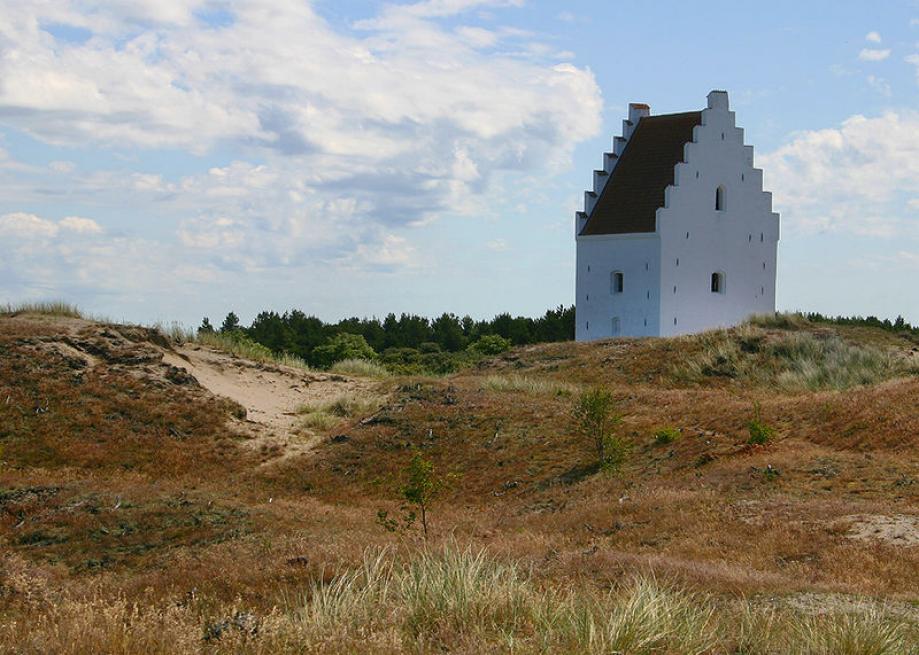The Church Beneath the Sands
Atlas Obscura on Slate is a blog about the world’s hidden wonders. Like us on Facebook and Tumblr, or follow us on Twitter.
Rising out of the sands in Skagen, Denmark, the remaining tower of a once prosperous chapel, now known simply as the Sand-Covered Church (or Buried Church, or Old Skagen Church) is a testament to the unstoppable power of nature.
Neither man nor God could save the church that was originally dedicated to St. Lawrence of Rome. First built in the 14th century, the brick chapel was the largest church in the region during its heyday. However, about 1600, increasing desertification began taking its toll on the building. Rising levels of sand began to bury the foundations faster than they could be dug out. Sand also found its way to the interior of the aging church through every crack and crevice. By the late 1700s, the door was almost completely covered and had to be dug out regularly just to hold services.
Despite the increasing issues with the church as the sand claimed more and more of it, the owners of the church refused to let it be closed down. The tapestries and furniture were removed from the interior lest they be buried, but it was not until 1795 that the Sand-Covered Church was finally closed. Most of the church was demolished and quickly wiped from the landscape by the shifting dunes, but the tall main tower was left to jut from the sands. It is this brick monolith that remains to this day.
The Sand-Covered Church has been whitewashed over the years and ownership transferred to a historical society, but the tower remains otherwise unaltered. It can no longer be entered, but windows still peek out of the sand—a reminder of the building that lies beneath.
More wonders to explore:

